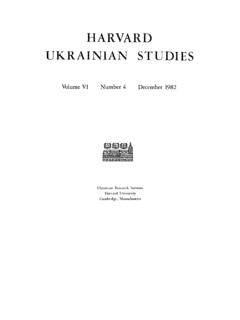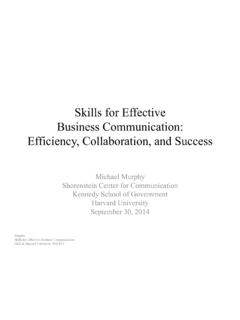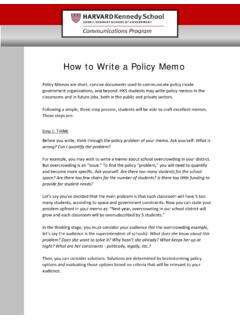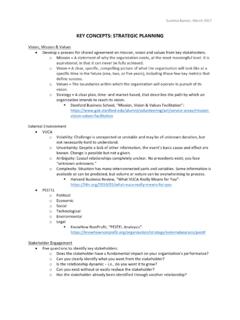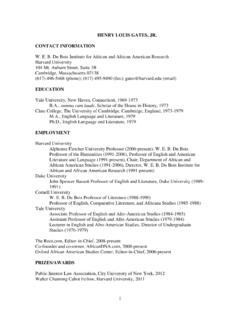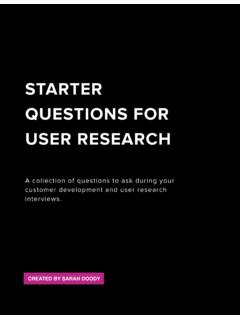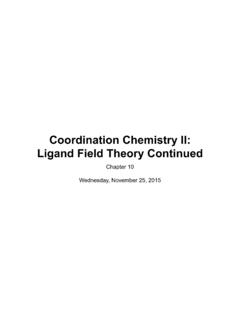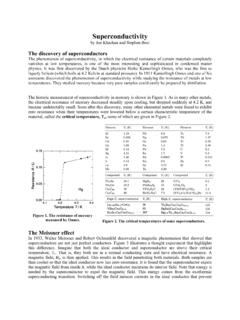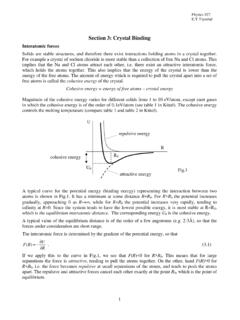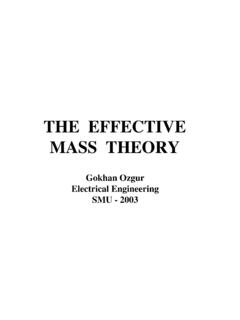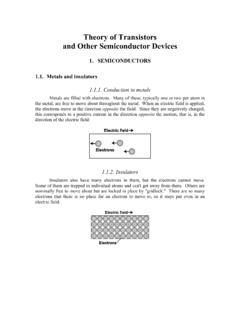Transcription of Toward a Theory of Anti-Oppressive Education
1 Review of Educational Research Spring 2000, Vol. 70, No. I, pp. 25-53 Toward a Theory of Anti-Oppressive Education Kevin K. Kumashiro Swarthmore College This article reviews the developing literature on Anti-Oppressive edu-cation ( , Education that works against various forms of oppression) by summarizing and critiquing the four primary approaches that edu-cational researchers have taken in conceptualizing (I) the nature of oppression and (2) the curricula, pedagogies, and policies needed to bring about change. These four approaches to Anti-Oppressive educa-tion are Education for the Other, Education About the Other, Educa-tion that Is Critical of Privileging and Othering, and Education that Changes Students and Society. Engaging in Anti-Oppressive Education requires not only using an amalgam of these four approaches.
2 In order to address the multiplicity and situatedness of oppression and the complexities of leaching and learning educators also constantly need to "look beyond" the field of educational research to explore the possibilities of theories that remain marginalized, including post-struc-turalist and psychoanalytic perspectives. This article concludes with implications for future research. In an attempt to address the myriad ways in which racism, classism, sexism, heterosexism, and other forms of oppression play out in schools, educators and educational researchers have engaged in two types of projects: understanding the dynamics of oppression and articulating ways to work against it. Whether working from feminist, critical, multicultural, queer, or other perspectives, they seem to agree that oppression is a situation or dynamic in which certain ways of being ( , having certain identities) are privileged in society while others are marginalized.
3 They disagree, however, on the specific cause or nature of oppres-sion, and on the curricula, pedagogies, and educational policies needed to bring about change. Collectively, they point to what I see as four ways to conceptual-ize and work against oppression. In this article, I describe and critique each approach, noting how different approaches are helpful for achieving different goals. I argue that though educators have come a long way in detailing ap-proaches that address different forms and different aspects of oppression, they need to make more use of poststructuralist perspectives in order to address the multiplicity and situatedness of oppression and the complexities of teaching and learning. Broadening the ways we conceptualize the dynamics of oppres-sion, the processes of teaching and learning, and even the purposes of schooling is necessary when working against the many forms of social oppression that play out in the lives of students.
4 Doing so requires not only using an amalgam of these four approaches (which many educators already do), but also "looking 25 Kumashim beyond" the field to explore the possibilities of theories that remain marginalized in educational research. Before turning to my analysis, I should explain some of my terminology. I use the term "Other" to refer to those groups that are traditionally marginalized in society, , that are other than the norm, such as students of color, students from under- or unemployed families, students who are female, or male but not stereotypically "masculine," and students who are, or are perceived to be, queer (I will define this term in a moment). Although my analysis focuses only on four forms of oppression, I believe it extends to other forms of oppression and to other traditionally marginalized groups, such as students with disabilities, stu-dents with limited or no English-language proficiency, and students from non-Christian religious backgrounds.
5 Future research should further explore these connections. I use the term "queer" to refer to persons who are "gay, lesbian, bisexual, transgender, intersexed , neither male nor female (Chase, 1998; Kessler, 1998) or in other ways 'queer' because of [their] sexual identity or sexual orientation." Although I mainly use "queer" to refer to sexual orientation, I do not limit its definition to "gay, lesbian, or bisexual," partly because of the interconnectedness of sexuality and sex/gender (Butler, 1990) and partly be-cause of the interconnectedness of heterosexism and gender oppression (Wilchins, 1997). The term "queer," after all, like "fag" and "dyke," derogates and polices not only people who feel attraction for members of the same gender, but also people who exhibit physical and behavioral traits that society deems appropri-ate only for those of a different gender ( , boys who act "like girls" and girls who look "like boys").
6 In addition to its inclusiveness, I choose to use the term "queer" for its pedagogical effect and political significance. As I will later ar-gue, the term "queer" is discomforting to many people because it continues to invoke a history of bigotry and hatred. For many queers, however, it has come to signify a rejection of normative sexualities and genders, a reclaiming of the terms of their identities, and a feeling of self-empowerment (Capper, 1999; Pinar, 1998; Tierney & Dilley, 1998). This disruptive, discomforting term, with its multiple meanings and uses, seems appropriate for an essay on changing op-pression. Education For the Other What is Oppression? The first approach to addressing oppression focuses on improving the experi-ences of students who are Othered, or in some way oppressed, in and by main-stream society. Researchers taking this approach have conceptualized oppres-sion in schools in two ways.
7 First, schools are spaces where the Other is treated in harmful ways. Sometimes the harm results from actions by peers or even teachers and staff. For example, numerous researchers have documented the discrimination, harassment, physical and verbal violence, exclusion, and isola-tion experienced by female students (Kenway & Willis, 1998), by queer stu-dents or students perceived to be queer (P. Gibson, 1989), and by students of color, such as Asian American students ( Commission on Civil Rights, 1992). Sometimes, however, the harm results from inactions by educators, administra-26 Anti-Oppressive Education tors, and politicians. For example, a number of researchers have documented the shocking, shameful, and substandard conditions, such as insufficient instruc-tional resources and unsafe buildings and classrooms, of many urban schools serving economically poorer students and students of color (Kozol, 1991), while others have pointed to the lack of attention female students receive by teachers who simultaneously give too much of their attention to disruptive male stu-dents (Orenstein, 1994).
8 The first way, then, that researchers have illustrated oppression is by pointing to the recognizably harmful ways in which only certain students are treated in and by schools, , to the external ways in which Otherness is marginalized. Oppression, however, is not always easy to recognize. The second way that researchers have conceptualized oppression is by looking at assumptions about and expectations for the Other especially those held by educators that influ-ence how the Other is treated. In particular, they look at the internal ways of thinking, feeling, and valuing that justify, prompt, and get played out (and even reinforced) in the harmful treatment of the Other. Sometimes, these disposi-tions both conscious and unconscious ones are about whom the Other is and/or should be. For example, researchers have pointed to various racial and ethnic prejudices and stereotypes that influence how teachers treat their stu-dents of color (Miller, 1995), or the sexist ideologies and stereotypes that influ-ence how teachers differently treat their female and male students and how students treat one another (Kenway & Willis, 1998; Mac an Ghaill, 1994).
9 Some-times, however, these dispositions are about whom the Other is not but should become or about whom the privileged must be in order not to be the Other. For example, researchers have pointed to the assimilationist ideology that students of color should conform to the mainstream culture and become more like middle-class White Americans (Miller, 1995) or to the sexist and heterosexist assertion that all boys should exhibit hegemonic masculinity in order to be "real" men (Askew & Ross, 1988). Students have responded in a variety of ways to these oppressive treatments and dispositions. Some have "overcompensated" by hyperperforming in aca-demic, extracurricular, and social activities (Friend, 1993); some have accom-modated enough to succeed academically but have maintained a sense of con-nection to their ethnic culture and community (M. Gibson, 1988); some have resisted the dominant values and norms of school and society (Fordham, 1996; Willis, 1977); some have experienced an array of "hidden injuries," such as the psychological harm of internalizing or even resisting stereotypes (Osajima, 1993); and some have endured depression, turned violence onto themselves by abus-ing drugs, starving and scarring their bodies, even attempting or committing suicide (Orenstein, 1994; Uribe & Harbeck, 1992).
10 Thus, to the onlooker, some of these students "succeed" in school, whereas others are marginalized, fail, and drop out, while still others exhibit no signs that distinguish them from the majority of the student body. But despite the apparent differences between those students who "succeed" and those who "fail" or simply fail to distinguish themselves, all experience oppression. Bringing about Change Researchers in this first approach to Anti-Oppressive Education have suggested two ways in which to address oppression. First, responding to the notion that 27 Kumashiro schools are "harmful spaces," many researchers have argued that schools need to be and to provide helpful spaces for all students, especially for those students who are targeted by the forms of oppression described above. These "spaces" have been conceptualized on two levels.
